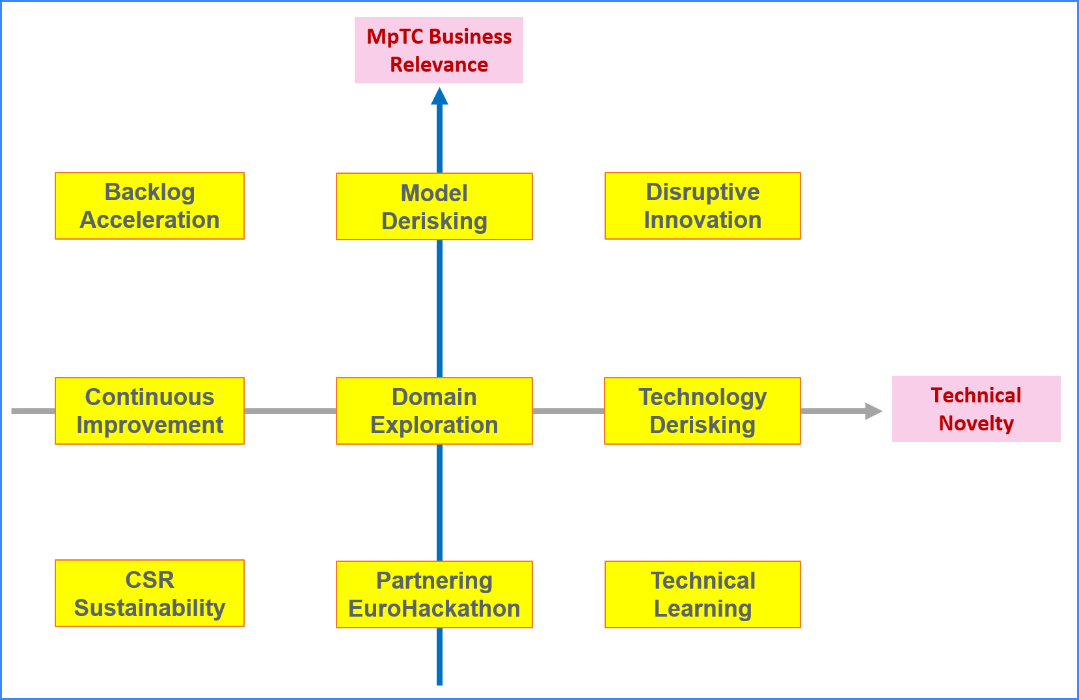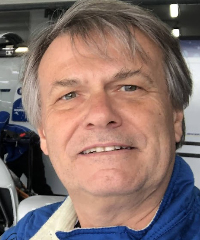Agile innovation for the Energy Transition
“Innovation” is a term widely used in SLB to describe many of the cool new things we do. It comes in multiple shapes and sizes and is undoubtedly key to our success as a global technology company. In this blog I will focus on innovation in digital technology development and will talk about:
-
various areas and scales of innovation and how to keep it flowing.
-
initiatives adopted by my local technology center.
-
tools to tackle a new energy landscape.
50 shades of innovation
Scott Berkun, a champion of creative thinking and innovation who has authored books on the topics, defines innovation as “significant positive change.” As such, it can apply to a wide range of activities, from optimizing our current products or services, to redesigning and transforming our offerings, creating entirely new ones, de-risking a project, or devising a strategy to enter a new market. But critically, there must be a defined goal and outcome.
The success of our new performance strategy hinges on innovation. Evolving the design of services and products for greater efficiency and reliability helps us provide our customers with better performance and lower emissions. New digital solutions and technologies will accelerate digital growth and enhance the market we address. And clearly, disruptive innovation will be paramount to opening new horizons in a transforming energy industry.
By fostering autonomy and alignment, agile methodologies facilitate innovation in product design and development. Innovation can be driven by business needs (intentional) or be allowed to emerge, fueled by passionate individuals and teams (emergent). Together, these two approaches keep people alternating between learning and applying their new knowledge or skills, generating happiness and motivation and maintaining the flow of innovation.
Let the passion for innovation emerge
“The NEST” program, which was established in 2018 in our software development center in Montpellier (MpTC), empowers anyone to autonomously propose a project, form a team, and work on their idea, during one week in every quarter. This culminates in a pitch to the entire staff. The goal is, “Learn to innovate, by innovating.” The program provides a safe environment where it is possible to experiment, fail, and learn; the key is to fail fast to boost learning. ‘Failing fast’ is one technique used to meet the objective to deliver the next great idea, by quickly changing course when something isn't working instead of continuing down the wrong path; improving incrementally and iteratively, in a truly agile fashion.
Failing fast requires a culture where the team has the freedom to fail but can learn something from each failure that helps the team succeed faster the next time.
Innovating on a regular basis, with events each quarter, embeds the habit in regular work. Whenever someone wants to experiment with a new idea, the answer is, “Yes, sure! Put it into the innovation platform and build a team around it for the upcoming NEST week!” After three years of practices, I analyzed the nearly 100 submissions to find out what type of projects are delivered. I put them onto a chart, with the vertical axis assessing the short-term local business relevance and the horizontal axis estimating the technical stretch.

Starting from the top right corner, we will find what we traditionally perceive as innovation: a new offering delivered through a new technology. The ‘intentional’ innovation (usually driven by the business organization) will be found near the top of the graph, while emerging will come from the bottom. But the key is that everyone should be able to cultivate their own passion or craft and, through alignment, make it come to life for the benefit of all. Typically, the initiatives from the bottom left corner would have little chance to materialize if it was not for the program. But at the end, the investment in time provided proves to bring value within short or longer term.
The initiative has generated many positive outcomes. Motivation is the main one; partnering with new people/organizations is another. NEST-derived ideas are often implemented in commercial offerings and one of the projects won the SLB global digital innovation competition, leading to funded development. We also learnt from it and engaged the local ecosystem in the organization of Energia Tech Hackathon—a collaborative challenge aiming for innovative digital solutions to better measure, save, produce, and distribute renewable energy in the Occitania region of France.
The new energy world needs new innovations
Having generated enthusiasm for innovating, the next step is leveraging it to address the huge challenges confronting us. The energy industry is facing a profound transformation; incremental innovation and improvements to existing products and services are not enough.
To prepare for the road ahead, I explored the C-K theory. The tools and methods derived from the C-K Design Theory (developed at Mines ParisTech) aim to structure and organize “innovative design,” which contrary to rule-based design, is centered on the development of radically new products and services.
The theory relies on the two-way interaction between the Concept (C) and Knowledge (K) spaces. The C-space is for imagining and exploring new concepts, however impossible or insane they may seem. Various ideas are presented, all connected to the initial concept, forming a tree-alike structure. The K-space is an enabler to better manage the knowledge available. Exploration of new concepts results in the search for new knowledge, which in turn increases the ability to generate new ideas and provokes the identification of new concepts. Challenging the identity of a product or service by going beyond obvious concepts and the initial knowledge base is critical for disruptive change.
Of course, there are many different approaches to innovation. While Design Thinking focuses on user experience, Lean Startup on the market, Blue Ocean Strategy on customer value, and Advanced Systematic Inventive Thinking (ASIT) on technical aspects. The C-K theory complements and enriches all these approaches.
On top of that, I am also facilitating “Lego Serious Play”—yes, using actual LEGO bricks—to improve collaborative creative thinking and communication, allowing participants to express their ideas without translating them into words. It has been applied successfully (and surprisingly!) to the analysis of existing systems and their interdependencies.
So, don’t hesitate any longer—join the fun of innovation!

